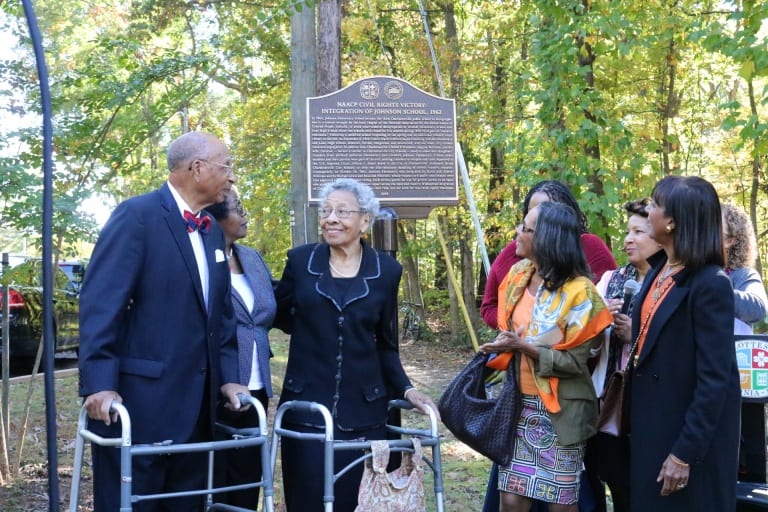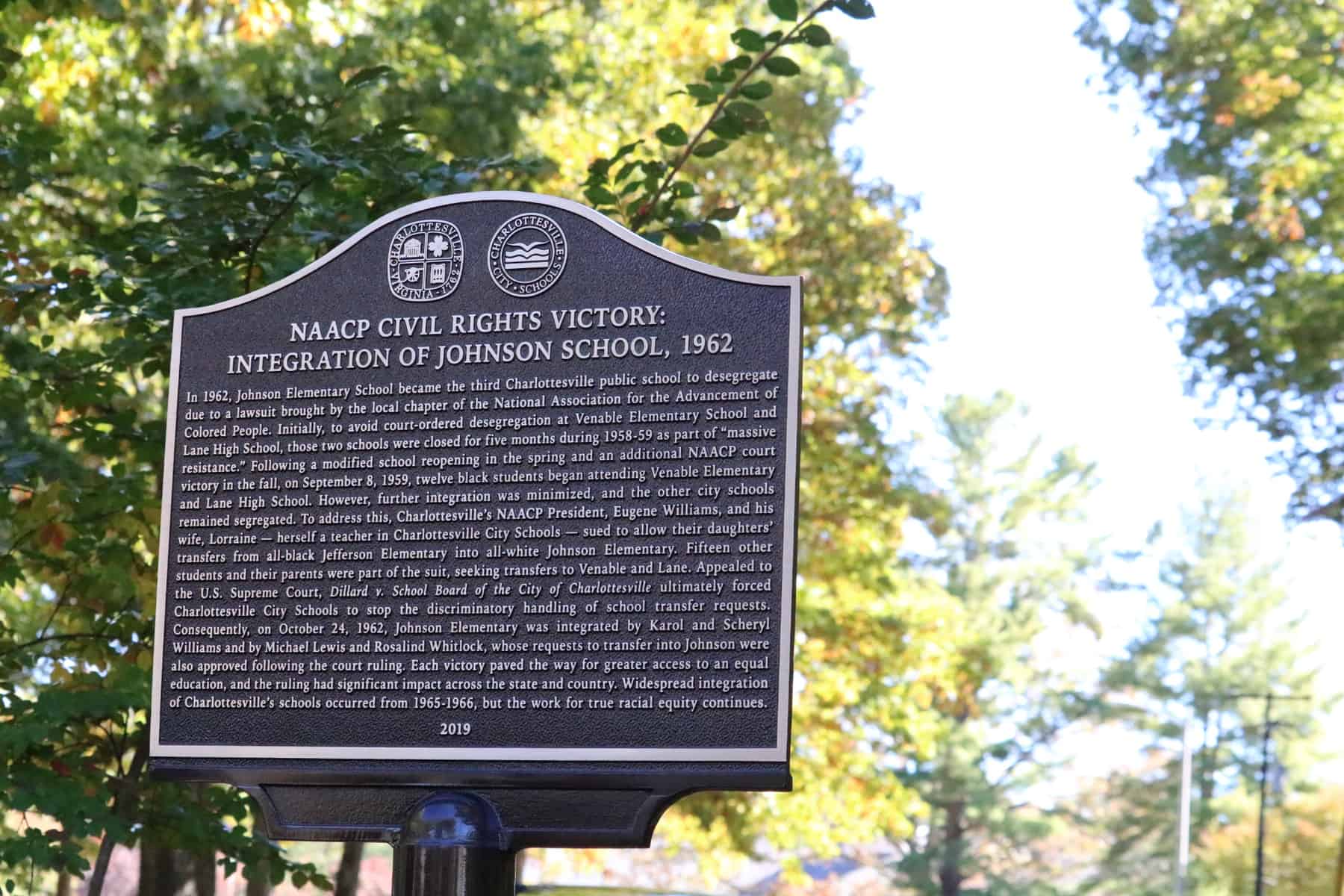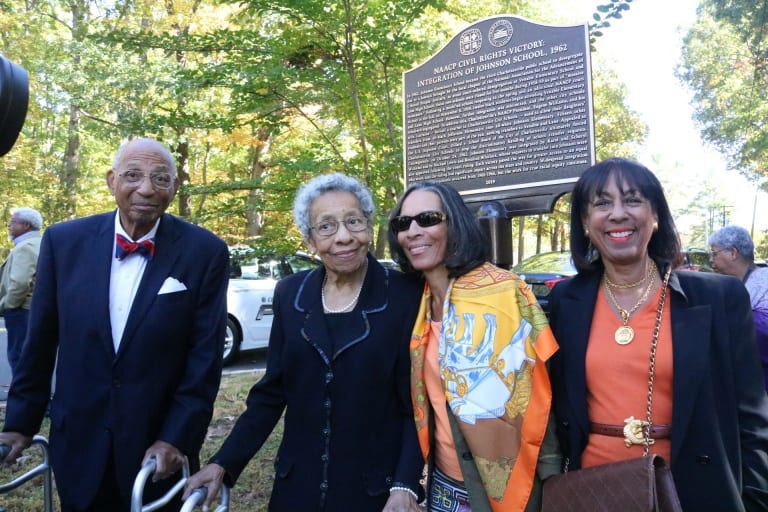On Wednesday, October 23, 2019, the City of Charlottesville and Charlottesville City Schools dedicated a new historic marker focused on the desegregation of Johnson Elementary School in October 1962.
Honoring the trailblazers who were part of the school’s desegregation, the City of Charlottesville and Charlottesville City Schools unveiled a new marker near the school’s entrance on Cherry Avenue, followed by a ceremony in the school auditorium,

The Williams family, along with Mayor Nikuyah Walker, Superintendent Dr. Rosa Atkins, and School Board Chair Jennifer McKeever, observe the newly-installed historical marker at Johnson Elementary (from left: Eugene Williams, Lorraine Williams, Karol Williams, and Scheryl Williams Glanton).
The sign continues the story of Charlottesville City Schools’ desegregation as detailed on a historic marker in front of Venable Elementary School (with a duplicate sign near the Albemarle County Office Building, the former site of Lane High School). The original sign speaks to the initial desegregation of Venable and Lane in September 1959.

Standing in front of Johnson Elementary School on Cherry Avenue, the marker recognizes the third school in Charlottesville and Albemarle County to integrate after Massive Resistance.
The new sign installed at Johnson School primarily addresses the period from 1959-1962, during which the City Schools minimized additional integration of the schools. Court cases led by the NAACP challenged discriminatory practices in the schools, and in 1962, the schools were compelled to expand desegregation, including allowing black students into all-white Johnson School. Johnson became the third public school in Charlottesville to integrate.
This effort was led in part by then-NAACP President Eugene Williams and his wife Lorraine, at that time a teacher in the City Schools. Their daughters, Karol and Scheryl, were among the 17 named plaintiffs seeking entrance to Johnson, Venable, or Lane. They, along with Michael Lewis and Rosalind Whitlock (whose parents had separately requested a transfer to Johnson), were the four to desegregate the school in 1962.

“The installation of this marker becomes another opportunity for community members, especially our school children, to learn the truth about Charlottesville’s history,” said the City’s Charlene Green of the Office of Human Rights. “We are telling more of those stories that have shaped Charlottesville’s narrative. It’s critical that we tell everyone’s story, no matter how uncomfortable it makes us.”
“We are pleased to honor these trailblazers — the parents and children of yesterday who have made gains and opportunities for all of us,” noted Charlottesville City Schools Superintendent Dr. Rosa Atkins. “The best way for us to honor them is to continually open up doors and improve outcomes for all students.”

 Additional settings for Safari Browser.
Additional settings for Safari Browser.





